Types of Binary Tree
A tree is said to be binary tree when,
1. A binary tree has a root node. It may not have any child nodes(0 child nodes, NULL tree).
2. A root node may have one or two child nodes. Each node forms a binary tree itself.
3. The number of child nodes cannot be more than two.
4. It has a unique path from the root to every other node.
There are four types of binary tree:
1. Full Binary Tree
2. Complete Binary Tree
3. Skewed Binary Tree
4. Extended Binary Tree
1. Full Binary Tree
- If each node of binary tree has either two children or no child at all, is said to be a Full Binary Tree.
- Full binary tree is also called as Strictly Binary Tree.
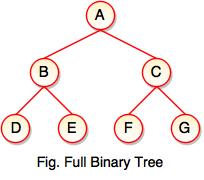
- Every node in the tree has either 0 or 2 children.
- Full binary tree is used to represent mathematical expressions.
2. Complete Binary Tree
- If all levels of tree are completely filled except the last level and the last level has all keys as left as possible, is said to be a Complete Binary Tree.
- Complete binary tree is also called as Perfect Binary Tree.
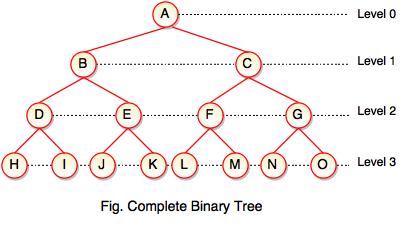
- In a complete binary tree, every internal node has exactly two children and all leaf nodes are at same level.
- For example, at Level 2, there must be 22 = 4 nodes and at Level 3 there must be 23 = 8 nodes.
3. Skewed Binary Tree
- If a tree which is dominated by left child node or right child node, is said to be a Skewed Binary Tree.
- In a skewed binary tree, all nodes except one have only one child node. The remaining node has no child.
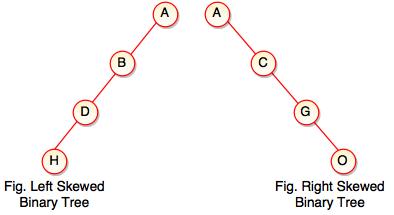
- In a left skewed tree, most of the nodes have the left child without corresponding right child.
- In a right skewed tree, most of the nodes have the right child without corresponding left child.
4. Extended Binary Tree
- Extended binary tree consists of replacing every null subtree of the original tree with special nodes.
- Empty circle represents internal node and filled circle represents external node.
- The nodes from the original tree are internal nodes and the special nodes are external nodes.
- Every internal node in the extended binary tree has exactly two children and every external node is a leaf. It displays the result which is a complete binary tree.
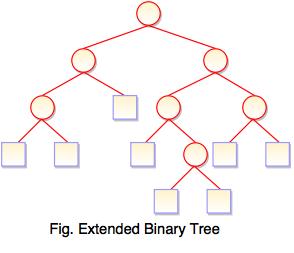
AVL Tree
- AVL tree is a height balanced tree.
- It is a self-balancing binary search tree.
- AVL tree is another balanced binary search tree.
- It was invented by Adelson-Velskii and Landis.
- AVL trees have a faster retrieval.
- It takes O(logn) time for addition and deletion operation.
- In AVL tree, heights of left and right subtree cannot be more than one for all nodes.
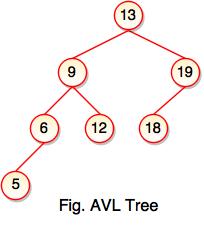
- The above tree is AVL tree because the difference between heights of left and right subtrees for every node is less than or equal to 1.
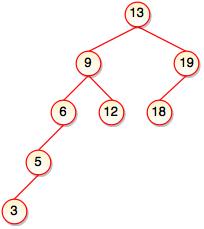
- The above tree is not AVL because the difference between heights of left and right subtrees for 9 and 19 is greater than 1.
- It checks the height of the left and right subtree and assures that the difference is not more than 1. The difference is called balance factor.





